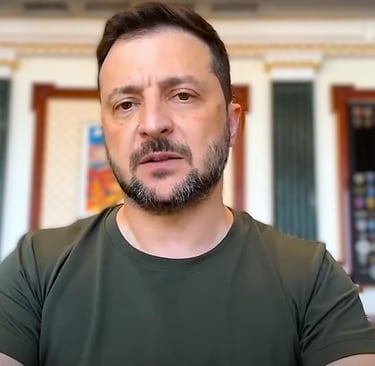US Proposes NATO-Style Joint Defense Guarantees for Ukraine – A Turning Point in Western Strategy
On August 16, 2025, the US offered NATO-style defense guarantees for Ukraine, signaling a new strategy to strengthen Kyiv’s security while seeking peace.
Raja Awais Ali
8/16/20252 min read


US Proposes NATO-Style Joint Defense Guarantees for Ukraine
On August 16, 2025, the United States announced a major shift in its approach to the ongoing Ukraine conflict by offering NATO-style joint defense guarantees to Kyiv. President Donald Trump, speaking at a virtual summit with European and Ukrainian leaders, stated that Washington is ready to provide Ukraine with long-term security assurances, but only if a ceasefire is first established.
Unlike full NATO membership, this proposal aims to deliver robust defense protections without triggering Article 5 obligations. The plan would allow Ukraine to strengthen its security framework while avoiding the political and military complications of immediate NATO accession.
European leaders cautiously welcomed the move, signaling readiness to contribute to a European-led multinational peacekeeping force. This proposed mission, called Multinational Force Ukraine, could involve 10,000 to 30,000 troops from nearly 30 partner countries. While the United States would not send ground troops, it would play a critical role by providing air power, intelligence sharing, and logistical support, ensuring Ukraine’s land, air, and maritime defenses remain strong.
This model reflects the growing recognition that Ukraine needs durable security guarantees to resist future aggression, regardless of its NATO status. European leaders emphasized that Ukraine retains the sovereign right to determine its Euro-Atlantic path, and no peace deal will give Russia veto power over its future.
The guarantees represent a middle ground: creating a protective shield for Ukraine built on U.S. capabilities and European partnership. For Ukraine, this offers credible protection in the short term, while leaving room for future integration into broader security structures.
The proposal also arrives at a critical moment, as speculation grows over potential trilateral talks between the U.S., Ukraine, and Russia. Ukrainian President Volodymyr Zelensky expressed cautious optimism, noting that any durable peace must include Western partnership and enforceable defense mechanisms.
While critics question how such a plan would be enforced, analysts view it as a bold step that could immediately boost Ukraine’s security. It sends a clear signal to Moscow that the West is prepared to back Ukraine militarily and diplomatically, even if NATO membership remains a long-term goal.
For now, Washington’s proposal highlights a pragmatic balance: supporting Ukraine with strong defense guarantees while avoiding direct NATO escalation. It may not solve the conflict overnight, but it marks a significant turning point in Western strategy and Kyiv’s fight for sovereignty.